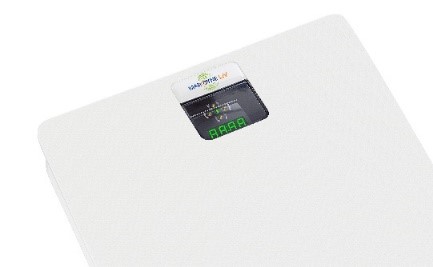Technology commissioned by NASA to help astronauts deal with bone loss while weightless in space is now set to help hundreds of thousands of people living on planet earth with the ‘silent disease’ of osteoporosis. Why ‘silent’? Because although three million people in the UK have osteoporosis, they can’t feel it or know they have it until they break a bone.
Osteoporosis is a big problem in the UK (sources in brackets appear below)
- 3 million people in the UK are estimated to have osteoporosis (1)
- 1 in 2 women and 1 in 5 men are expected to break a bone each year (4)
- It is estimated that 500,000 women aged 50-64 have osteoporosis: of these 46,000 will break a bone within a year (6)
- More than 500,000 broken bones are caused by osteoporosis each year – that’s 1,400 per day and one every minute (1)
- 1 in 2 people who have broken a bone have given up sport or exercise, or reduced what they do (3)
- 42% of people said their osteoporosis made them feel socially isolated (3)
- 33% of people who have broken a bone are seeing friends and relatives less than they used to (3)
- 49% of people who have fractured a bone have had their physical intimacy affected by their osteoporosis (3)
- 1 in 4 people dies within a year of suffering a hip fracture (5)
- A year after a hip fracture, 80% of people need help with activities such as shopping or driving (2)
- 54% of people who fractured a bone have experienced height loss or a change in their body shape (3)
How it works
Marodyne LiV (https://marodyne.co.uk/) is a low vibrating platform that looks like a set of bathroom scales. You simply stand on it for 10 minutes a day and allow the low intensity vibrations to stimulate your body’s cells to reform bone and muscle tissue. When you step onto the Marodyne platform, its ‘smart’ technology automatically adjusts to your weight, mass and movement to produce low acceleration, high frequency vibrations that send signals to re-activate the bone building cells in the body.
35 years in the making
The history of the Marodyne LiV device started 35 years ago when Professor Clinton Rubin from the Stony Brook State University of New York was commissioned by NASA to understand how mechanical signals can influence the musculoskeletal system. Astronauts’ bones don’t experience loads while they are weightless in space and this leads to the loss of bone mineral density, just as in osteoporosis. On average, an astronaut loses as much bone in space in one month as a perimenopausal woman does on earth in one year.
Professor Rubin and his research teams broke the code and found that low intensity vibrations that deliver a precise and targeted low-magnitude mechanical signal at a frequency of exactly 30 Hz per second will stimulate and regulate critical stem-cell processes to trigger the body to regenerate bone tissue. It took many years to perfect the technology and make it accessible to all in the form of the Marodyne LiV device.
Recognised by the Royal Osteoporosis Society
“The Royal Osteoporosis Society is encouraged to see the results so far from the Marodyne LiV research and its potential as a safe and effective tool for the prevention of osteoporosis,” says Henry Mace, Head of Clinical Partnerships, Royal Osteoporosis Society. “We look forward to working with Marodyne LiV and will be watching with great interest to see the difference it makes to people living with the condition.”
Certified and safe
Marodyne LiV can be safely used alongside all prescription drugs currently available to treat osteoporosis and is set to change the way consumers and medics deal with the bone-thinning disease. Certified as a safe and effective tool to help people with osteopenia and osteoporosis it is supported by a number of clinical studies that show LiV can assist in the prevention of osteoporosis in post-menopausal women and promote bone and muscle growth in younger osteoporotic women.
From space to our front rooms, Marodyne LiV is most definitely one giant leap in the mission to tackle osteoporosis. Find out more at www.marodyne.co.uk


